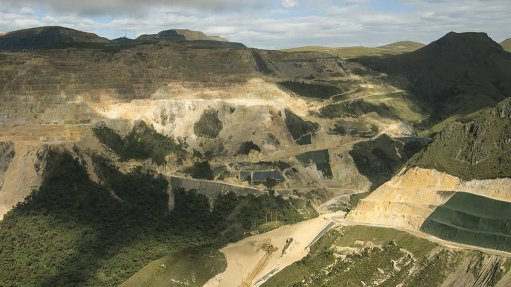
Name: La Zanja mine.
Location: La Zanja mine is located in Pulán, Santa Cruz province, about 107 km north-east of Cajamarca region, Peru.
Holding and Controlling Company: La Zanja mine is run by Minera La Zanja, a subsidiary of Buenaventura, which owns 53.06%, while Newmont owns 46.94% of the mine.
Brief Description: The La Zanja mine comprises the San Pedro Sur and Pampa Verde pits.
Brief History: Operations at the La Zanja mine began in 2010.
Products: Gold and silver.
Geology/Mineralisation: Epithermal gold mineralisation in oxides is associated with the dome edges in San Pedro and Pampa Verde deposits. Additionally, several low and intermediate-sulphidation vein systems have been recognised on the periphery, as well as copper/molybdenum/gold mineralisation related to porphyry-type systems.
Ore Reserves: Total proven and probable ore reserves as of December 31, 2017, were estimated at 10.8-million tonnes grading 0.47 g/t gold and 6.22 g/t silver.
Mineral Resources: Total ore resources as of December 31, 2017, were estimated at 7.3-million tonnes grading 0.47 g/t gold and 6.53 g/t silver.
Mining Method: Openpit.
Mining is performed through openpit at the San Pedro Sur and Pampa Verde pits. The height of the operating benches is 6 m and 12 m for the final slope, with an angle ranging from 36° to 54°. Ore is transported to the San Pedro Sur leach pad, 3 km from the San Pedro Sur pit and 10 km from the Pampa Verde pit. The barren material is transported to deposits located near the San Pedro Sur and Pampa Verde pits. The material is loaded using excavators with a 3 m3 capacity, and hauled using trucks with a capacity of 20 m3.
Major Infrastructure and Equipment: The metallurgical process at La Zanja comprises leaching the run-of-mine ore (obtained from blasting in the openpit) in the leaching heap using a cyanide solution.
The solution is collected using pipes and sent to the processing plant. At the plant, Merrill-Crowe (zinc precipitation) and activated carbon adsorption are performed.
The precipitate obtained in the Merrill-Crowe plant and the carbon loaded with ore from the adsorption plant are sent to Minera Yanacocha, where the eluent solution is desorbed and smelted, and the precipitate is smelted, obtaining doré bars.
Prospects: La Zanja’s life-of-mine was extended to 2019.
The mine is potentially becoming a copper producer, with encouraging results it received at the Emperatriz project.
Contact: Buenaventura investor relations Rodrigo Echecopar.
Contact Details:
Buenaventura
Tel +511 419 2500 ext. 2591
Email rodrigo.echecopar@buenaventura.pe
Website http://www.buenaventura.com